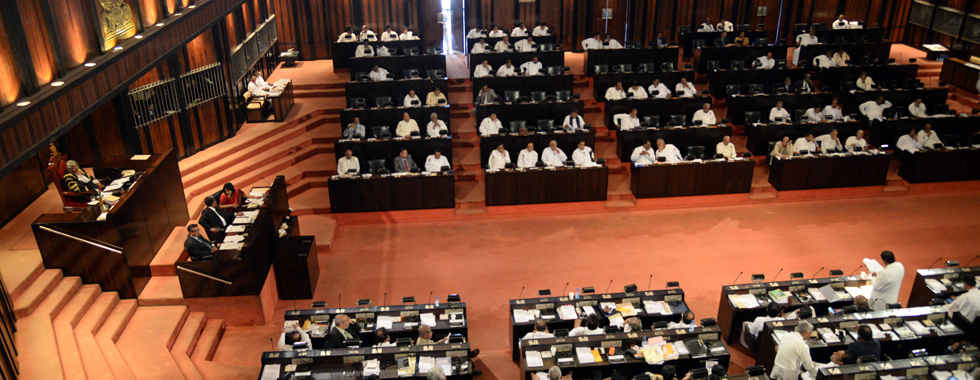Sunday Times 2
19th Amendment: Understanding the Committee Stage of Parliament
Much attention has been drawn to the parliamentary process, particularly the committee stage, following the Supreme Court determination on the 19th Amendment to the Constitution.
The judgement has seemingly scuppered the new Government’s desire to transfer core executive powers, currently vested in the office of the President, to the office of the Prime Minister.

Every bill must go to committee stage for clause-by-clause approval
Instead of redrafting the constitutional bill, Prime Minister Ranil Wickremesinghe has pledged to make the relevant alterations to the bill during the “committee stage” of parliament. Though this has gained much media coverage, there is little understanding of what the committee stage in Parliament entails.
In the parliamentary process, the substantive debate on any proposed legislation occurs at the “second reading”. At the end of the second reading of a bill, a vote is taken, which in the case of the 19th Amendment will require a two-thirds majority of the whole of parliament (150 of 225 MPs). If it fails to garner the two-thirds majority it requires, the bill is considered voted down. However, if it receives the necessary support, the legislation then passes through to committee stage.
The committee stage
Every bill must go to committee stage for clause-by-clause approval. It can take place in two forms: In the form of a standing committee, which sits outside the main chamber of parliament and is more frequently used for private members’ bills rather than government legislation. Or alternatively it will be a committee of the whole house, where the ceremonial mace is removed from the table and placed on a rest, signifying that the main chamber has become in effect a large committee room.
A committee of the whole House is almost certainly the option to be taken in this circumstance, as it is a government bill and is also capable of being handled expeditiously, rather than the referral and reporting back of a standing committee.
This process of approving every clause provides the opportunity for the fine-tuning of legislation, with scope for deletions and additions to the legislation (standing orders 37-40).
According to the authoritative text “Parliamentary Practice in Sri Lanka” by Priyanee Wijesekera, who was once the secretary general of parliament, “it is accepted that committee stage amendments should not be on major policy changes”. However if “such amendments are introduced by prior decision of the Government, it would be appropriate if adequate public notice of revised policy is given”. The latter provision is what the government would rely upon in bringing its actions within the spirit of parliamentary process and thereby avoiding a redraft of the 19th Amendment, which would further delay the passage of the bill — a delay which would run counter to the wishes of some constituent parties of the Government.
Gaps in parliamentary procedure
Dhammika Dissanayake, the secretary general of parliament, was reported in the Sunday Times (http://www.sundaytimes.lk/150412/columns/144396-144396.html) as stating that only a simple majority is required to pass an amendment to a bill at committee stage – not the two-third majority required to pass the bill at the second reading vote. However this has not been stipulated in the constitution or the standing orders.
This could theoretically have an impact on a governing coalition that struggles to cobble together a two-thirds majority, but can secure a simple majority – thereby appeasing opposition MPs at the second reading to pass a constitutional bill and then passing controversial amendments during the committee stage. This is not envisaged, but is permissible under the present institutional framework.
However an even greater discrepancy exists in the committee stage. There is no provision to refer the additions or deletions made during the committee stage for further scrutiny by the Supreme Court to determine consistency with the constitution. This highlights a kink in the separation of powers, whereby the Supreme Court could certify constitutional conformity of a constitutional bill and then be undercut at committee stage.
At present the Government has taken the step of putting before the Supreme Court suggested committee stage amendments, thus illustrating the unlikelihood of such exploitation of committee stage process. However, this gap in stipulated procedure places reliance on parliamentarians to act in accordance with convention, deviations from which can have significant constitutional consequences.
(The writer is Governance Consultant at Verité Research)

